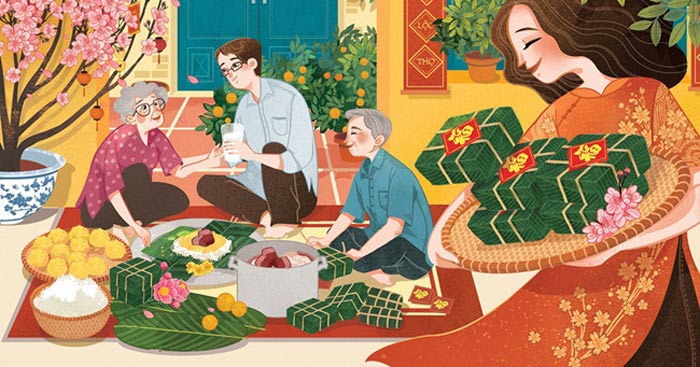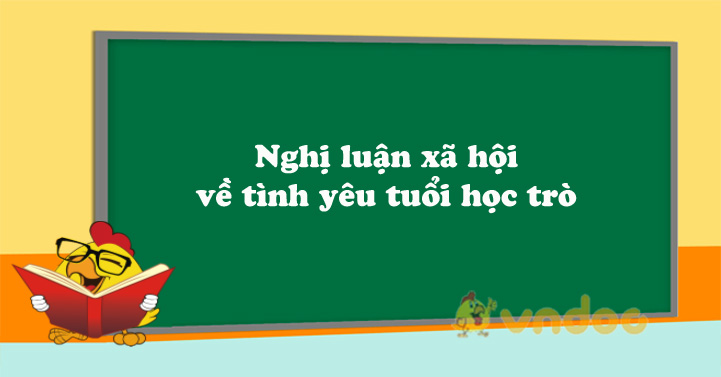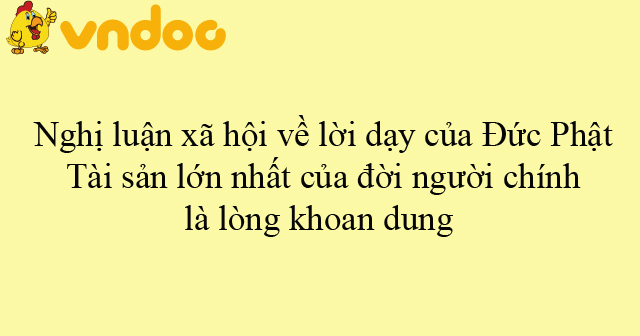|
ĐỀ SỐ 10 ««««« |
ĐỀ THI THỬ THPT QG NĂM HỌC 2020 Môn: Tiếng anh Thời gian làm bài: 60 phút, không kể thời gian phát đề |
Mark the letter A, B, C, or D on your answer sheet to indicate the word whose underlined part differs from the other three in pronunciation in each of the following questions.
Question 1. A. chin B. chaos C. child D. charge
Question 2. A. mood B. flood C. spoon D. moon
Mark the letter A, B, C, or D on your answer sheet to indicate the word that differs from the other three in the position of primary stress in each of the following questions.
Question 3. A. category B. accompany C. experience D. compulsory
Question 4. A. tradition B. modernize C. impressive D. emotion
Mark the letter A, B, C, or D on your answer sheet to indicate the correct answer to each of the following questions.
Question 5. ___________ giraffe is the tallest of all ___________ animals.
A. A/ the B. The/ Ø C. A/ Ø D. Ø/ the
Question 6. Unlike most birds, ___________.
A. the heads and necks of vultures lack feathers
B. vultures do not have feathers on their heads and necks
C. feathers are not found on the heads and necks of vultures
D. there are no feathers on vultures’ heads and necks.
Question 7. Some men are concerned with physical ___________ when they choose a wife.
A. attract B. attractive C. attractiveness D. attractively
Question 8. A number of students ___________ for a rise since last year.
A. ask B. have asked C. has asked D. asked
Question 9. ___________ at by everyone, he was disappointed.
A. Laughed B. Laugh C. Laughing D. In laugh
Question 10. The teacher recommended that Linda ___________ her essay as soon as possible.
A. finish writing B. finished writing
C. should finish to write D. finishes writing
Question 11. I won’t change my mind ___________ what you say.
A. whether B. no matter C. because D. although
Question 12. The organization underwent ___________ reforms.
A. far-reaching B. far-gone C. far-off D. far-flung
Question 13. I didn’t ___________ to see my aunt when I was in Paris.
A. take B. make C. get D. meet
Question 14. Vietnam’s rice export this year will decrease __________ about 10%, compared with that of last year.
A. with B. at C. by D. on
Question 15. She built a high wall round her garden __________ .
A. in order that her fruit not be stolen B. to enable people not taking her fruit
C. so that her fruit would be stolen D. to prevent her fruit from being stolen
Question 16. The Beauty Contest is __________ start at 8:00 a.m our time next Monday.
A. due to B. bound to C. about to D. on the point of
Question 17. By the end of the 21st century, scientists __________ a cure for the common cold.
A. will find B. will have found
C. will be finding D. will have been found
Question 18. There is one person to __________ I owe more than I can say.
A. whom B. who C. that D. whose
Mark the letter A, B, C, or D on your answer sheet to indicate the word(s) CLOSEST in meaning to the underlined word(s) in each of the following questions.
Question 19. The new cartoon film catches the fancy of the children.
A. satisfies B. amuses C. attracts D. surprises
Question 20. The teacher gave some suggestions on what could come out for the examination.
A. effects B. symptoms C. hints D. demonstrations
Mark the letter A, B, C, or D on your answer sheet to indicate the word(s) OPPOSITE in meaning to the underlined word(s) in each of the following questions.
Question 21. Fruit and vegetables grew in abundance on the island. The islanders even exported the surplus.
A. excess B. large quantity C. small quantity D. sufficiency
Question 22. There are several different kinds of faults in reading which are usually more exaggerated with foreign learners.
A. overestimated B. understated C. overemphasized D. undertaken
Mark the letter A, B, C, or D on your answer sheet to indicate the option that best completes each of the following exchanges.
Question 23. David and Tom are meeting after a long time.
- David: “How have you been recently?”
- Tom: “_________________.”
A. I am going on holiday next week. B. By bus, usually.
C. I am working here. D. Pretty busy, I think.
Question 24. - “Well, cats are very good at catching mice around the house.”
- “_________________.”
A. Nothing more to say B. You can say that again
C. Yes, I hope so D. No, dogs are very good, too
Read the following passage and mark the letter A, B, C, or D on your answer sheet to indicate the correct word or phrase that best fits each of the numbered blanks from 25 to 29.
Beatrix Potter was a story writer whose books about animals have been translated into many languages and read by both children and adults. (25) __________ being an author, she was also regarded as a very successful farmer. Bom in London in 1866, Beatrix was (26) __________ for at home by various servants. Every year she (27) __________ the days to her annual holiday in the countryside. She would take to her London home small animals which she (28) __________ and drew. As she grew up, she entertained other children with drawings and stories about these animals. In 1901, she printed a book at her own (29) __________ called ‘The Tale of Peter Rabbit’. So many copies were sold that she bought a farm, where over the next eight years she wrote many other stories. They all sold very well and readers liked their detailed color drawings.
Question 25. A. Apart B. Besides C. Otherwise D. Except
Question 26. A. cared B. minded C. attended D. looked
Question 27. A. imagined B. counted C. considered D. numbered
Question 28. A. remarked B. noticed C. saw D. observed
Question 29. A. earning B. spending C. expense D. charge
Read the following passage and mark the letter A, B, C, or D on your answer sheet to indicate the correct answer to each of the questions from 30 to 34.
Foot-racing is a popular activity in the United States. It is seen not only as a competitive sport but also as a way to exercise, to enjoy the camaraderie of like-minded people, and to donate money to a good cause. Though serious runners may spend months training to compete, other runners and walkers might not train at all. Those not competing to win might run in an effort to beat their own time or simply to enjoy the fun and exercise. People of all ages, from those of less than one year (who may be pushed in strollers) to those in their eighties, enter into this sport. The races are held on city streets, on college campuses, through parks, and in suburban areas, and they are commonly 5 to 10 kilometers in length.
The largest footrace in the world is the 12-kilometer Bay to Breakers race that is held in San Francisco every spring. This race begins on the east side of the city near San Francisco Bay and ends on the west side at the Pacific Ocean. There may be 80,000 or more people running in this race through the streets and hills of San Francisco. In the front are the serious runners who compete to win and who might finish in as little as 34 minutes. Behind them are the thousands who take several hours to finish. In the back of the race are those who dress in costumes and come just for fun. One year there was a group of men who dressed like Elvis Presley, and another group consisted of firefighters who were tied together in a long line and who were carrying a fire-hose.
There was even a bridal party, in which the bride was dressed in a long white gown and the groom wore a tuxedo. The bride and groom threw flowers to bystanders, and they were actually married at some point along the route.
Question 30. The word “camaraderie” as used in the first paragraph could be best replaced by which of the following?
A. games B. companionship C. jokes D. views
Question 31. Which of the following is NOT implied by the author?
A. Footraces appeal to a variety of people.
B. Walkers can compete for prizes.
C. Entering a race is a way to give support to an organization.
D. Running is a good way to strengthen the heart.
Question 32. The word “beat” as used in the first paragraph could be best replaced by which of the following?
A. incline B. overturn C. outdo D. undermine
Question 33. In what lines does the author give reasons for why people enter footraces?
A. Foot-racing ... and exercise. B. People of all ages ... in length.
C. The largest... 34 minutes. D. Behind them ... a fire-hose.
Question 34. Which of the following is NOT mentioned in this passage?
A. Some runners looked like Elvis Presley. B. Some runners were ready to put out a fire.
C. Some runners were participating in a wedding. D. Some runners were serious about winning.
Read the following passage and mark the letter A, B, C, or D on your answer sheet to indicate the correct answer to each of the questions from 35 to 42.
Most desert animals will drink water if confronted with it, but many of them never have any opportunity. All living things must have water, or they will expire. The herbivores find it in desert plants. The carnivores slake their thirst with the flesh and blood of living prey. One of the most remarkable adjustments, however, has been made by the tiny kangaroo rat, who not only lives without drinking but subsists on a diet of dry seeds containing about 5% free water. Like other animals, he has the ability to manufacture water in his body by a metabolic conversion of carbohydrates. But he is notable for the parsimony with which he conserves his small supply by every possible means, expending only minuscule amounts in his excreta and through evaporation from his respiratory tract.
Investigation into how the kangaroo rat can live without drinking water has involved various experiments with these small animals. Could kangaroo rats somehow store water in their bodies and slowly utilize these resources in the long periods when no free water is available from dew or rain? The simplest way to settle this question was to determine the total water content in the animals to see if it decreases as they are kept for long periods on a dry diet. If they slowly use up their water, the body should become increasingly dehydrated, and if they begin with a store of water, this should be evident from an initial high water content. Results of such experiments with kangaroo rats on dry diets for more than 7 weeks showed that the rats maintained their body weight. There was no trend toward a decrease in water content during the long period of water deprivation. When the kangaroo rats were given free access to water, they did not drink water. They did nibble on small pieces of watermelon, but this did not change appreciably the water content in their bodies, which remained at 66.3% to 67.2% during this period.
This is very close to the water content of dry-fed animals (66.5%), and the availability of free water, therefore, did not lead to any “storage” that could be meaningful as a water reserve. This makes it reasonable to conclude that physiological storage of water is not a factor in the kangaroo rat’s ability to live on dry food.
Question 35. What is the topic of this passage?
A. Kangaroo rats B. Water in the desert
C. Desert life D. Physiological experiments
Question 36. The word “expire” in paragraph 2 is closest in meaning to ___________.
A. become ill B. die C. shrink D. dehydrate
Question 37. Which of the following is NOT a source of water for the desert animals?
A. desert plants
B. metabolic conversion of carbohydrates in the body
C. the blood of other animals
D. streams
Question 38. The author states that the kangaroo rat is known for all of the following EXCEPT __________
A. the economy with which it uses available water B. living without drinking water
C. breathing slowly and infrequently D. manufacturing water internally
Question 39. The word “parsimony” in paragraph 1 is closest in meaning to _____________.
A. intelligence B. desire C. frugality D. skill
Question 40. It is implied by the author that desert animals can exist with little or no water because of ________________.
A. less need for water than other animals B. many opportunities for them to find water
C. their ability to eat plants D. their ability to adjust to the desert environment
Question 41. The word “deprivation” in paragraph 2 is closest in meaning to ____________.
A. preservation B. renewal C. examination D. loss
Question 42. According to the passage, the results of the experiments with kangaroo rats showed that
A. kangaroo rats store water for use during dry periods
B. kangaroo rats took advantage of free access to water
C. there was no significant change in body weight due to lack of water or accessibility to water
D. a dry diet seems detrimental to the kangaroo rat’s health
Mark the letter A, B, C, or D on your answer sheet to indicate the underlined part that needs correction in each of the following questions.
Question 43. Those people say (A) that it is (B) such polluted air that they (C) can’t breath, (D) don’t they?
Question 44. His father (A) asked him (B) what (C) did he want (D) for his birthday.
Question 45. Helen Killer, (A) who was both (B) blind and (C) deafness, overcame her (D) inabilities with the help of her teacher, Ann Sulivan.
Mark the letter A, B, C, or D on your answer sheet to indicate the sentence that is closest in meaning to each of the following questions.
Question 46. Due to the fact that the demand for tea was very high in the 19th century, its price was astronomical.
A. It was not until the 19th century that the demand for tea started to increase.
B. The demand for tea was so high in the 19th century that its price was enormous
C. In the 19th century the price for tea didn’t increase despite the demand.
D. In the 19th century, even though the demand for tea was enormous its price remained cheap.
Question 47. The situation was so embarrassing that she did not know what to do.
A. So embarrassing was the situation that she did not know what to do.
B. It was such an embarrassing situation; however, she did not know what to do.
C. So embarrassing the situation was that she did not know what to do.
D. She did not know what to do, though it was not an embarrassing situation.
Question 48. Impressed as we were by the new cinema, we found it rather expensive.
A. We weren’t as much impressed by the new cinema’s look as its cost.
B. The new cinema was more expensive than we expected.
C. We were very impressed by the new cinema, but found it rather expensive.
D. We were not impressed by the new cinema at all because it looked rather expensive.
Mark the letter A, B, C, or D on your answer sheet to indicate the sentence that best combines each pair of sentences in the following questions.
Question 49. You cannot completely avoid stress in your life. You need to find ways to cope with it.
A. After you can completely avoid stress in your life, you need to find ways to cope with it.
B. As long as you can completely avoid stress in your lives, you need to find ways to cope with it.
C. As you cannot completely avoid stress in your life, you need to find ways to cope with it.
D. Because stress can completely be avoided in your life, you need to find ways to cope with it.
Question 50. The student next to me kept chewing gum. That bothered me a lot.
A. The student next to me kept chewing gum, which bothered me a lot.
B. The student next to me kept chewing gum, that bothered me a lot.
C. The student next to me kept chewing gum bothering me a lot.
D. The student next to me kept chewing gum bothered me a lot.
Đáp án
|
1-B |
2-B |
3-A |
4-B |
5-B |
6-B |
7-C |
8-B |
9-A |
10-A |
|
11-B |
12-A |
13-C |
14-C |
15-D |
16-B |
17-B |
18-A |
19-C |
20-C |
|
21-C |
22-B |
23-D |
24-B |
25-B |
26-A |
27-B |
28-D |
29-C |
30-B |
|
31-D |
32-C |
33-A |
34-B |
35-A |
36-B |
37-D |
38-C |
39-C |
40-D |
|
41-D |
42-C |
43-C |
44-C |
45-C |
46-B |
47-A |
48-C |
49-C |
50-A |


.jpg)
.jpg)

